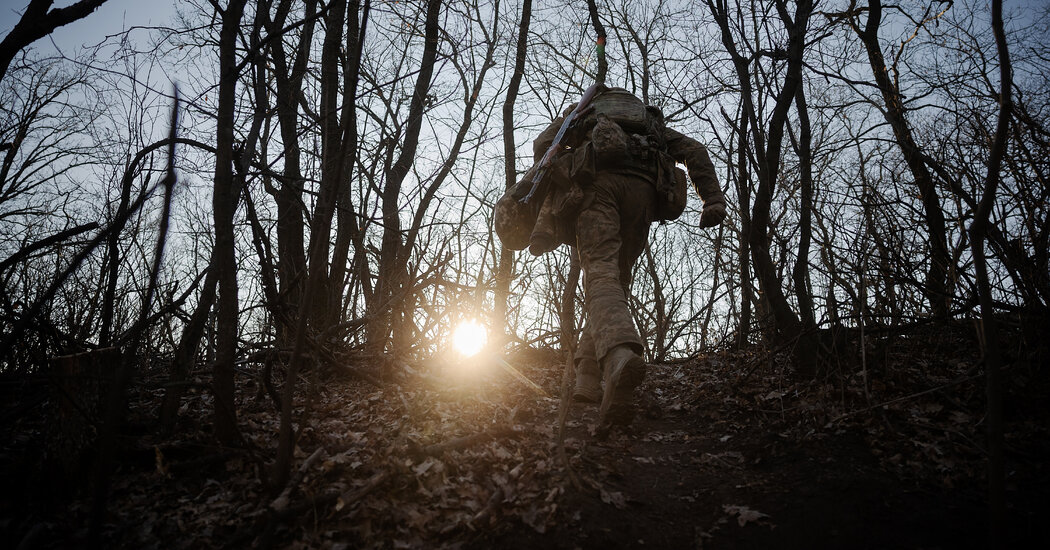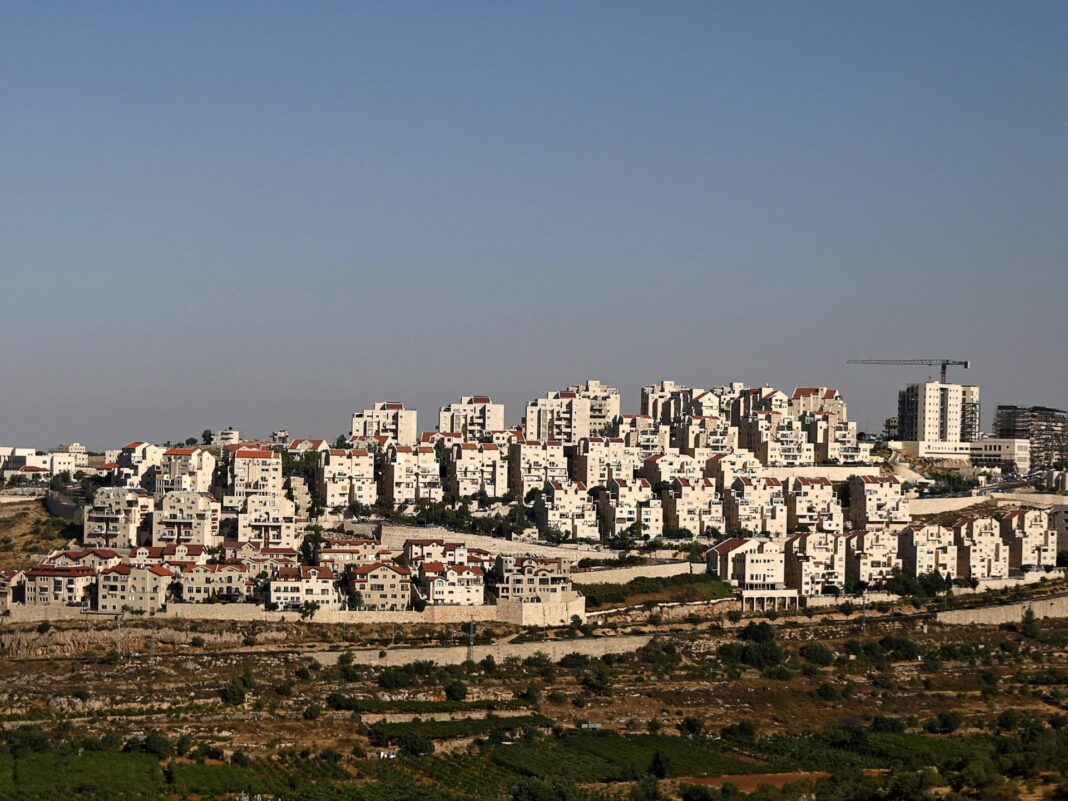President Trump says he wants to “make a deal” to “STOP this ridiculous war” in Ukraine. His call with President Vladimir V. Putin, and a meeting expected this week between U.S. and Russian officials in Saudi Arabia, have raised expectations that negotiations could end three years of fighting.
But how would those talks actually work? Who would be involved? What could a deal look like?
The New York Times has been reporting on these questions since the early weeks of the war in 2022, when Ukraine and Russia held direct talks that failed to reach a peace agreement.
To sum up what we know at this point, here’s our guide to potential Ukraine peace talks.
Right now, Ukraine has few options for reversing Russia’s recent gains on the battlefield. That means that any deal is likely to involve painful concessions by Ukraine, which could be seen as Mr. Trump’s rewarding Mr. Putin’s aggression. It also means that Russia will almost certainly drive a hard bargain.
But Mr. Putin may have his own incentives for making a deal. Russia’s economy risks runaway inflation amid enormous spending on the war, while the military is suffering some 1,000 or more casualties a day. And a settlement over Ukraine could pave the way for a reduction of Western sanctions.
The talks would be exceedingly complicated. Many doubt that Mr. Putin will negotiate in good faith, while Europe and Ukraine fear that Mr. Trump will be tempted to strike a deal with the Kremlin over their heads.
Still, Russia and Ukraine did make headway toward striking a deal when they last negotiated directly, back in the spring of 2022. And some experts believe that an agreement is possible that would satisfy Mr. Putin while preserving some form of sovereignty and security for Ukraine.
Who’s at the table?
The Biden administration sought to isolate Russia diplomatically and said any negotiations about Ukraine’s fate had to involve the Ukrainians. Mr. Trump broke from that approach on Feb. 12, when he discussed Ukraine in a lengthy call with Mr. Putin and then said he would “inform” Ukraine’s president, Volodymyr Zelensky, of the conversation.
Now it’s Ukraine that appears isolated. Mr. Zelensky said he was not invited to discussions this week between top aides to Mr. Trump and their Russian counterparts in Saudi Arabia.
European countries may also be cut out — even though Europe’s total aid to Ukraine since the start of the war, roughly $140 billion, is greater than what the United States has provided.
Mr. Trump said he would “probably” meet Mr. Putin in Saudi Arabia soon. Qatar, the United Arab Emirates and Turkey have already been mediating between Ukraine and Russia on matters like prisoner exchanges and navigation in the Black Sea.
Territory
Ukraine has said it will never recognize any change to its borders. Russia claims not just the roughly 20 percent of the country it already controls, but also a swath of Ukrainian-held land in four regions that it does not fully control.
A possible compromise: freeze the fighting.
Russia keeps control of the land it has already captured but stops fighting for more. Ukraine and the West don’t formally recognize Russia’s annexation, even as Russia retains its broader territorial claims. An agreement could stipulate that territorial disputes will be resolved peacefully at some point in the future — say, 10 or 15 years, as Ukrainian negotiators proposed for the status of Crimea in the 2022 peace talks.
And a wrinkle: Kursk.
Ukraine still holds around 200 square miles of territory in Russia’s Kursk region. Russia has rejected the idea that Ukraine could use that land as a bargaining chip in any future talks. But if talks start before Russia has managed to expel Ukrainian troops from there, Ukraine may still be able to find a way to trade a retreat from Kursk for concessions by Russia.
NATO and the E.U.
While Ukraine wants to reclaim the territory Russia has captured, it has also made clear that its future security is at least as important, meaning protection from renewed Russian aggression.
Ukraine describes NATO membership as the key to this protection. Russia describes the possibility of Ukraine joining the alliance as an existential threat to its own security.
The Trump administration has already made it clear that it expects Russia to get its way here.
Leaving open a path for Ukraine to join the European Union, but not NATO, could be presented as a compromise. Before the 2022 peace talks failed, Russian negotiators agreed to language in the draft treaty that said the deal would be “compatible with Ukraine’s possible membership in the European Union.”
Security guarantees
Absent NATO membership, Mr. Zelensky has floated the deployment of 200,000 foreign troops to Ukraine to safeguard any cease-fire. Analysts say the West can’t produce such a large force. Keir Starmer, the British prime minister, said on Sunday that his country would be ready to commit an unspecified number of peacekeeping troops.
But Russia wants its own “security guarantees” to assure that Ukraine won’t try to rebuild its military capacity and recapture Russian-occupied land. It wants to cap the size of Ukraine’s military and ban foreign troops from the country.
Threading this needle is widely seen as the trickiest aspect of any negotiation. A team of experts led by Marc Weller, a Cambridge international law professor who specializes in peace negotiations, has drafted a potential agreement that envisions a compromise: deploying a small international force of 7,500 staffed by countries acceptable to both Russia and Ukraine to keep the peace at the front line.
The Weller proposal envisions immediate sanctions against either side if it restarts hostilities. It would allow Ukraine to hold limited joint exercises with other countries and cooperate with them on weapons production and military training.
There would be no permanent deployment of foreign troops, but Ukraine could host a small number of technical personnel. And Ukraine would agree to a ban on missiles with a range of more than 155 miles.
Cease-fire mechanics
The durability of any peace could hinge on the nuts and bolts of a cease-fire agreement.
Thomas Greminger, a former Swiss diplomat who was involved in monitoring the cease-fire in eastern Ukraine after 2015, flags three key issues.
The first is agreeing on the “line of contact” separating Russian from Ukrainian-controlled territory. Next there would need to be a “disengagement zone,” or buffer, between opposing forces, to prevent stray gunfire or misunderstandings from flaring into combat. Third, he said, there will need to be some way to hold both sides to account for cease-fire violations.
The language in the agreements “could be very technical” on issues like the disengagement zone and cease-fire enforcement, said Mr. Greminger, now the director of the Geneva Center for Security Policy think tank. But, he said, that language could be “quite decisive over whether the cease-fire holds.”
NATO in Eastern Europe
Mr. Putin claims his war isn’t just about Ukraine, but about forcing the West to accept a new security architecture in Europe.
Weeks before the invasion, he presented an ultimatum demanding that NATO stop expanding eastward and withdraw from much of Europe. And in his Feb. 12 call with Mr. Trump, Mr. Putin warned of “the need to eliminate the root causes of the conflict,” the Kremlin said.
That means Russia is likely to make demands that go well beyond the fate of Ukraine itself.
America’s allies are likely to argue that a retreat of NATO in Europe will increase the risk of a Russian invasion for countries like Poland and the Baltics. But Mr. Trump might be amenable to such a deal, given his skepticism about American deployments abroad.
All this will make for an incredibly complicated negotiation. Mr. Greminger, who has been working with experts close to governments with a stake in the war to game out how the talks could go, sees at least three negotiating tracks: U.S.-Russian, Russian-Ukrainian and Russian-European.
“You have at least these three levels,” he says. “There are no shortcuts.”
Trump and Putin
Mr. Putin also has demands that go beyond territory and security. In the 2022 peace talks, Russian negotiators sought to strip away Ukrainian identity, demanding that the country make Russian an official language and ban naming places after Ukrainian independence fighters. Those issues are likely to come up again.
Mr. Putin could also try to leverage a Ukraine settlement to get other benefits from Mr. Trump, like sanctions relief. But it is his apparent desire for a grand bargain with Washington, some analysts believe, that could represent his greatest incentive to cut a deal.
“Putin would like to have a longer-term, productive relationship with this administration,” said Rose Gottemoeller, a former American under secretary of state with experience negotiating with the Russians. “He needs to be willing to make concessions.”
Andrew E. Kramer contributed reporting.


